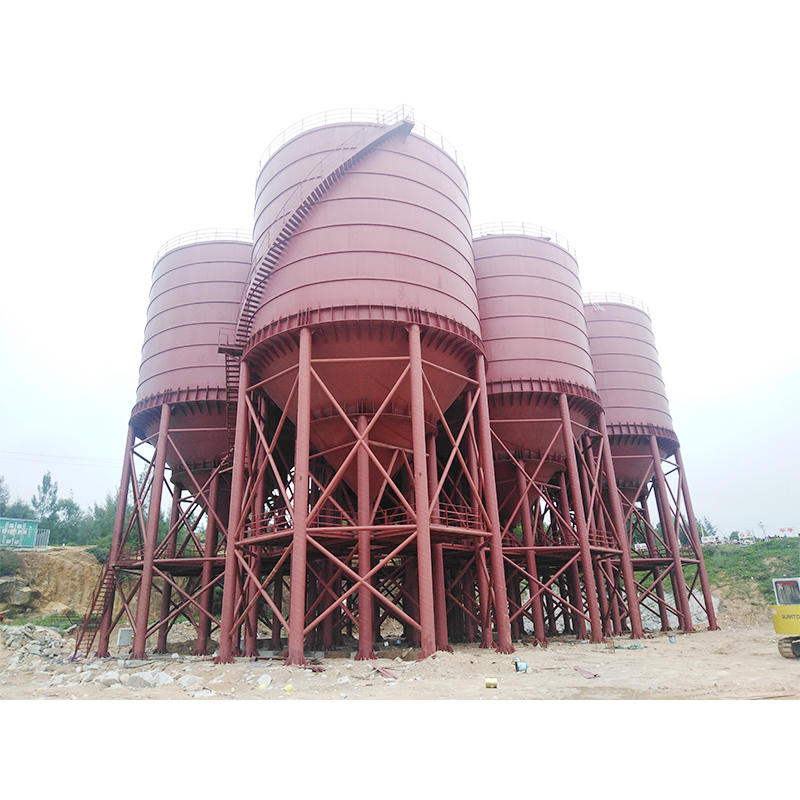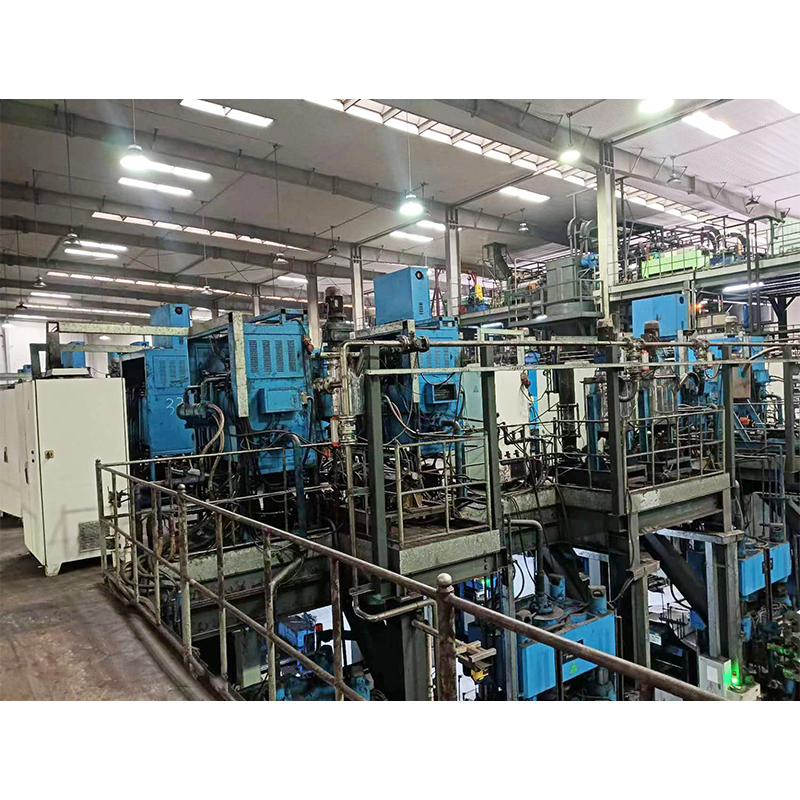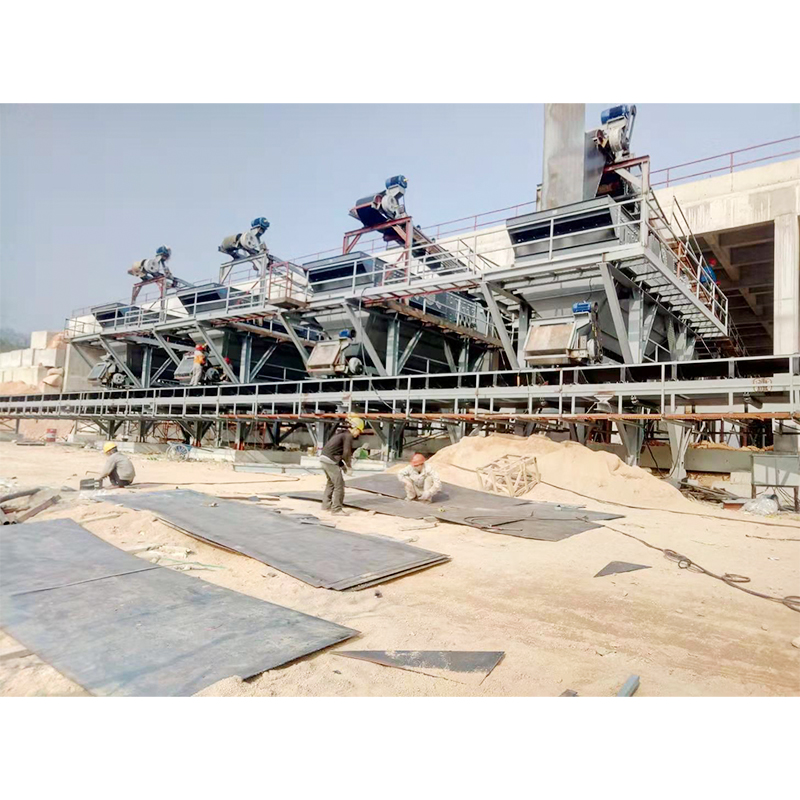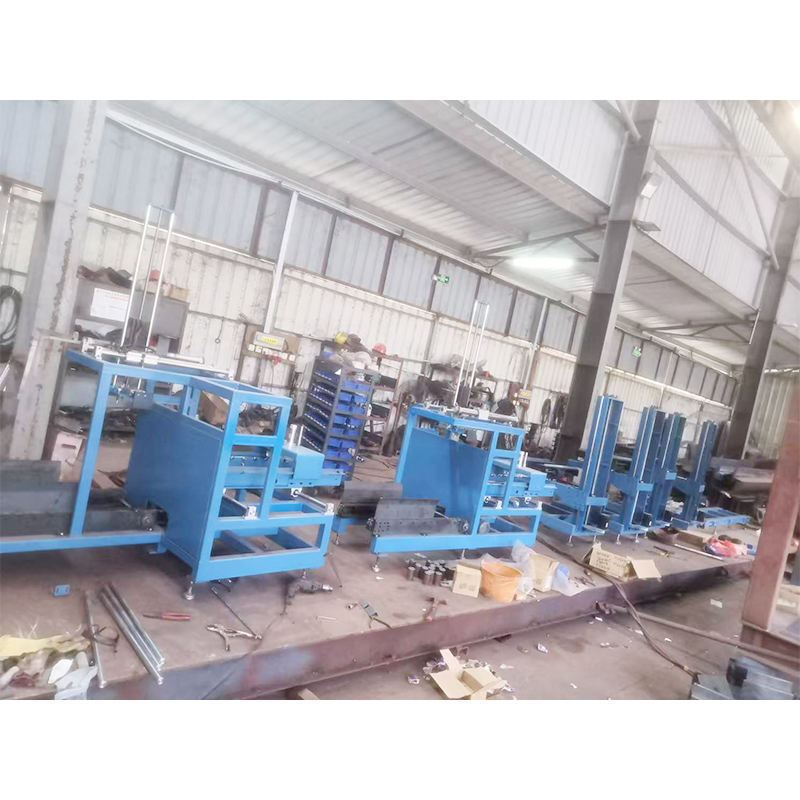What role does an automatic slurry weighing and conveying system play in the slurry weighing and conveying process?
Release Time : 2025-07-30
With the continuous advancement of industrial technology, the application of automatic slurry weighing and conveying systems is becoming increasingly widespread. In particular, in industries such as construction and oil drilling that require precise handling of fluid materials (such as slurry), automated slurry weighing and conveying systems have become a key factor in improving production efficiency and ensuring construction quality.
1. Achieving Precision Mixing
In the slurry mixing process, accurate proportions are essential for ensuring slurry performance. Different projects have varying requirements for slurry, with strict standards for parameters such as density, viscosity, and solids content. By integrating high-precision sensors and intelligent algorithms, the automatic slurry weighing and conveying system can monitor and adjust the addition of various raw materials in real time, ensuring that each batch of slurry meets the designed formulation. This not only improves work efficiency but also prevents quality issues caused by human error.
2. Improving Operational Safety
Traditional slurry handling methods often rely on manual labor, which poses certain safety risks. An automated slurry weighing and conveying system can significantly reduce or even completely eliminate these risks. For example, in hazardous environments (such as high temperatures, high pressures, or areas with toxic gas leaks), workers can complete all operations without having to directly touch the equipment. Furthermore, the system incorporates multiple safety mechanisms. Upon detecting an abnormality (such as excessive pressure or temperature), an alarm is immediately triggered and appropriate measures are taken to ensure the safety of both personnel and equipment.
3. Optimizing Resource Utilization
By fully monitoring the entire slurry production and conveying process, an automated slurry weighing and conveying system can help companies better manage and allocate resources. On the one hand, it can dynamically adjust production speed and scale based on actual demand, avoiding waste. On the other hand, using data analysis tools, managers can gain a deeper understanding of the cost structure of each process, enabling them to formulate more rational procurement plans and cost control strategies, thereby maximizing resource utilization.
4. Enhancing Flexibility and Adaptability
Modern engineering construction often faces complex and ever-changing working environments, requiring slurry weighing and conveying systems to be highly flexible and adaptable. The automatic slurry weighing and conveying system, with its powerful data processing capabilities and rapid response mechanism, can quickly adapt to changing external conditions. For example, in the event of unexpected geological conditions, the system can quickly change the slurry formula to meet new construction requirements. Or, in the event of equipment failure, it can promptly switch to a backup plan to ensure production continuity.
5. Promoting Information Management
With the advancement of information technology, the concept of "smart construction sites" has become increasingly popular. As a key component of this concept, the degree of automation of the slurry weighing and conveying system directly impacts the level of information management across the entire project. By uploading field data to a cloud platform, remote monitoring and diagnosis are enabled and seamless integration with other information systems (such as ERP and SCM) is achieved, forming a complete industrial chain and providing strong support for decision-making.
6. Promoting Sustainable Development
With growing environmental awareness, reducing the environmental impact of industrial activities has become a pressing issue. The automatic slurry weighing and conveying system plays a significant role in this regard. First, precise control can reduce raw material waste and pollutant emissions. Second, some advanced systems are equipped with exhaust gas recovery devices and wastewater treatment facilities, further alleviating pressure on the surrounding environment. Furthermore, intelligent management systems help extend equipment life and reduce solid waste generated by obsolete equipment.
In summary, the automatic slurry weighing and conveying system plays a vital role in the slurry weighing and conveying process. From achieving precise batching to improving operational safety, from optimizing resource utilization to enhancing flexibility and adaptability, and finally promoting information management and sustainable development, its application has brought significant economic and social benefits to enterprises.
1. Achieving Precision Mixing
In the slurry mixing process, accurate proportions are essential for ensuring slurry performance. Different projects have varying requirements for slurry, with strict standards for parameters such as density, viscosity, and solids content. By integrating high-precision sensors and intelligent algorithms, the automatic slurry weighing and conveying system can monitor and adjust the addition of various raw materials in real time, ensuring that each batch of slurry meets the designed formulation. This not only improves work efficiency but also prevents quality issues caused by human error.
2. Improving Operational Safety
Traditional slurry handling methods often rely on manual labor, which poses certain safety risks. An automated slurry weighing and conveying system can significantly reduce or even completely eliminate these risks. For example, in hazardous environments (such as high temperatures, high pressures, or areas with toxic gas leaks), workers can complete all operations without having to directly touch the equipment. Furthermore, the system incorporates multiple safety mechanisms. Upon detecting an abnormality (such as excessive pressure or temperature), an alarm is immediately triggered and appropriate measures are taken to ensure the safety of both personnel and equipment.
3. Optimizing Resource Utilization
By fully monitoring the entire slurry production and conveying process, an automated slurry weighing and conveying system can help companies better manage and allocate resources. On the one hand, it can dynamically adjust production speed and scale based on actual demand, avoiding waste. On the other hand, using data analysis tools, managers can gain a deeper understanding of the cost structure of each process, enabling them to formulate more rational procurement plans and cost control strategies, thereby maximizing resource utilization.
4. Enhancing Flexibility and Adaptability
Modern engineering construction often faces complex and ever-changing working environments, requiring slurry weighing and conveying systems to be highly flexible and adaptable. The automatic slurry weighing and conveying system, with its powerful data processing capabilities and rapid response mechanism, can quickly adapt to changing external conditions. For example, in the event of unexpected geological conditions, the system can quickly change the slurry formula to meet new construction requirements. Or, in the event of equipment failure, it can promptly switch to a backup plan to ensure production continuity.
5. Promoting Information Management
With the advancement of information technology, the concept of "smart construction sites" has become increasingly popular. As a key component of this concept, the degree of automation of the slurry weighing and conveying system directly impacts the level of information management across the entire project. By uploading field data to a cloud platform, remote monitoring and diagnosis are enabled and seamless integration with other information systems (such as ERP and SCM) is achieved, forming a complete industrial chain and providing strong support for decision-making.
6. Promoting Sustainable Development
With growing environmental awareness, reducing the environmental impact of industrial activities has become a pressing issue. The automatic slurry weighing and conveying system plays a significant role in this regard. First, precise control can reduce raw material waste and pollutant emissions. Second, some advanced systems are equipped with exhaust gas recovery devices and wastewater treatment facilities, further alleviating pressure on the surrounding environment. Furthermore, intelligent management systems help extend equipment life and reduce solid waste generated by obsolete equipment.
In summary, the automatic slurry weighing and conveying system plays a vital role in the slurry weighing and conveying process. From achieving precise batching to improving operational safety, from optimizing resource utilization to enhancing flexibility and adaptability, and finally promoting information management and sustainable development, its application has brought significant economic and social benefits to enterprises.







